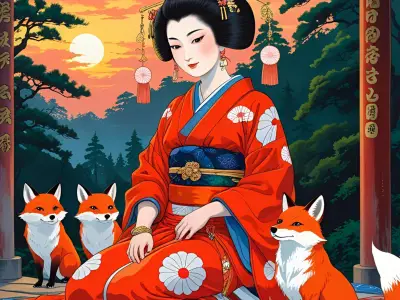There are eight major biomes of the world: tropical wet forests, temperate forests, boreal forests, savannas, subtropical deserts, chaparral, temperate grasslands, and Arctic tundra. Much of what defines these types of biomes comes down to plant structures, leaf types and spacing of flora. An easy guide to remember is that the most densely populated biomes are located close to the equator, getting more and more barren as you travel toward either the Arctic or Antarctica.
Over thousands of miles, all the different biomes of the world exist alongside each other to house the inhabitants of our planet in all its natural diversity, but what is a biome?
What is a Biome?
In short, a biome is a distinct biological community of plants and animals coexisting in a similar ecosystem or region. They operate as separate systems, classified and categorised by mankind, offering shelter and sustenance to thousands of different species. While elephants roam the savanna and whales swim in the oceans, you might think these worlds are far removed. But, as a whole, they create Earth’s biosphere. Without even one of these incredibly special biomes of the world, the whole system (biosphere) would come crashing down.
What are biospheres? The biosphere describes the area of the earth (and any other habitable planets) that is occupied by living organisms. The biosphere itself measures approximately 12 miles, top to bottom, and contains life that exists on the ground (the lithosphere), in the water (the hydrosphere) and in the air (the lithosphere).

Different types of biomes exist across — and because of — divergent climates, altitudes, and latitudes, and you’re likely to encounter very different flora and fauna depending on these environments. Other abiotic (or nonliving) factors, such as natural disasters, also have a huge impact.
Types of Biomes on Earth
Generally, biologists divide the biomes into aquatic and terrestrial or, in other words, water and land. To keep our feet dry until the end of our trip around the globe, we’ll stay on land for now.

Forest Biomes
Forests share some basic categorisation values — namely the abundance of aboveground biomass and tree life — but their densities and characteristics vary wildly.
The tropical wet forests of equatorial regions boast the greatest productivity of the biomes of the world, due to their multi-layered structure, which flourishes in the warm, wet climate. The lack of seasonal change and constant amount of sunlight, alongside the nourishing wet seasons, create the perfect environment for growth, and these rainforests remain evergreen.
This is part of the reason why there is such an abundance of life in the rainforests, and why so many different species thrive here.
Conversely, the boreal — taiga or coniferous — forests of Russia, Canada, Northern Europe and Alaska boast only a few layers of biomass between floor and canopy and are thus home to fewer species.

These types of biomes have cold, dry winters and short, cool, wet summers and the meagre annual precipitation usually takes the form of snow. However, these biomes also play host to stunning, slow-growing, giant evergreen trees, such as pine and spruce.
The forest biome with the least evergreen activity is also the most common in our biosphere: the temperate forest biomes of Eastern North America, Western Europe, Eastern Asia, Chile, and New Zealand. Here, deciduous trees grow and shed leaves seasonally and invertebrates find food in the fallen plant matter of the forest floor, while small mammals scour the trees and other flora.

The Chaparral Biome
Of the biomes of the world, the Chaparral, or scrub forest, makes for a particularly interesting case study. It can be explored in California, along the Mediterranean Sea, and on the southern coast of Australia. Due to the dry, hot summers, much of the plant life here lies dormant during these months and has even adapted to thrive after bushfires.
Savanna and Subtropical Desert Biomes
Trees do not grow so well in the savanna, with their hot, tropical climates contributing to the sparsely scattered tree populations in these desert regions of Africa, South America, and Northern Australia. Given the extensive dry season, herbaceous flowering plants dominate the landscape here and nourish inhabitants. Likewise, plant life in the subtropical desert biomes has adapted to live in the dry climes, but little vegetation and low animal diversity can still be observed.

Temperate Grassland Biomes
Temperate grasslands, on the other hand, host a plethora of creatures great and small. The dense grasses of these prairie types of biomes in Eurasia and America can sustain grazing animals. However, due to low annual rainfall and icy winters, trees are generally only found close to the streams and rivers that cut through the landscape.
The Arctic Tundra
Finally, the Arctic Tundra. You might think of this as a barren wasteland but during a short 10 to 12-week annual growing season boasting 24 hours of daylight, every inch of ground is covered in low-lying lichens and plant life as the permafrost thaws and the temperature rises above freezing.

This intense period of growth offsets the harsh environment that tundra-dwellers struggle through for the rest of the year. It makes for one of the most extreme — and most mesmerising — biomes of the world.
Aquatic Biomes
From the cold to the wet, it’s time to dive into the underwater types of biomes. These are categorised as either freshwater biomes — lakes, rivers, streams, wetlands, basins, polar waters or mountain freshwaters — or marine biomes, such as our seas and oceans. The defining difference between freshwater and marine biomes is that marine biomes are composed of saltwater.
All aquatic biomes are categorised further according to several factors including size, depth, vegetation, animal communities and any other physical characteristics such as hydrothermal vents and pack ice.

These make up about 73% of the Earth’s surface — from the Amazon river to the Great Barrier Reef — and are one of the most important factors for life on Earth. They form the basis of the water cycle and help regulate atmospheric moisture, cloud formation, and precipitation.
Aquatic biomes, like terrestrial biomes, are also home to millions of animal and plant species. You might think marine biomes have an abundance of interesting species, such as blue whales, dolphins and sharks as well as countless species of fish. But freshwater biomes are also home to species of crab, salmon, water-surface insects, and other fascinating amphibians.
Biomes and the Biosphere
Many of the biomes of the world are home to not only humankind but also the animals and plants that sustain us while bringing joy and diversity to our existence on earth.

They are all part of the delicate ecosystems of our biosphere, which work together harmoniously, despite their divergences; from the mountainous sources from which rivers flow to the seas giving life to organisms as they pass, to the great trees dropping their leaves and the animals nourished by the minerals of decomposition.
But if the specific and special characteristics of these varying types of biomes are pulled out of balance by climate changes, natural disasters, and human interaction, these systems can be irreparably harmed. Should you wish to explore the incredible biomes of the world, we must also work together to preserve and conserve them for generations to come.
At the time of publishing, entering the code LEARNING in the checkout will reduce the price of our
Biology Diploma Course to £29.





